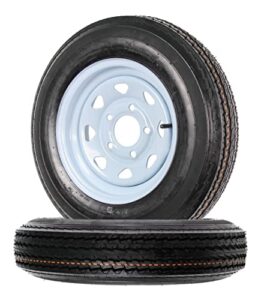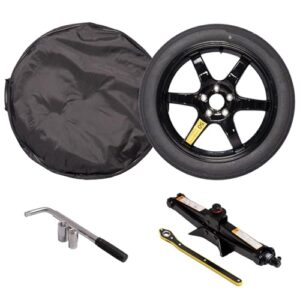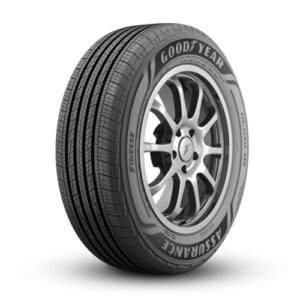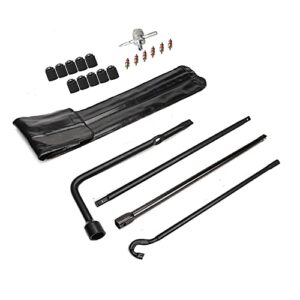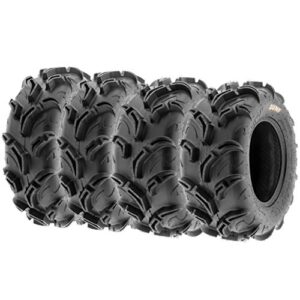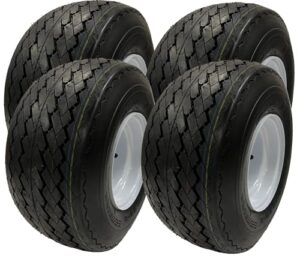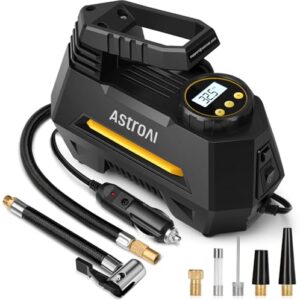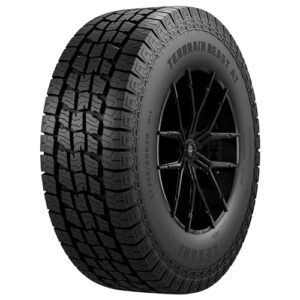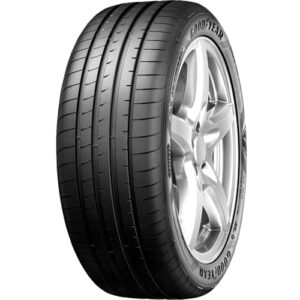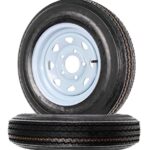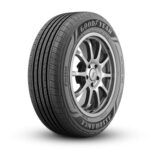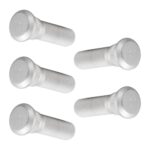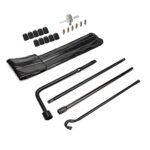Flat tires can result from punctures, tire wear, or valve stem damage. Road hazards such as sharp objects often cause punctures.
Understanding the causes of flat tires is essential for any driver. Sharp objects like nails or glass shards on the road can pierce the tire’s surface, leading to a gradual or sudden loss of air. Improper tire inflation also plays a significant role; both over-inflation and under-inflation can lead to tire failure.
Regular wear and aging may cause the tire to weaken and become more susceptible to flats. Valve stem issues, such as leaks or damage, can also result in a flat tire, as they compromise the tire’s ability to hold air. Recognizing these common causes contributes to preventative maintenance and safer driving experiences.
Common Culprits Behind Flat Tires
Imagine a beautiful day turned sour by a sudden flat tire. That’s a scenario no driver wants to face. Yet, flat tires are a common mishap, and various factors are to blame. Let’s take a closer look at the usual suspects that can leave you stranded with a deflated wheel.
Nails And Sharp Objects
Sharp objects are notorious for puncturing tires. Consider the following:
- Nails: Commonly found on roads and driveways.
- Glass shards: Left behind from vehicle accidents or littering.
- Metal scraps: Often lost from construction vehicles.
Driving over these pointy hazards can pierce the tire’s surface, causing immediate loss of air.
Wear And Tear
Tires gradually wear down from regular use:
| Age of Tire | Tire rubber deteriorates over time. |
| Mileage | Higher mileage increases wear. |
| Driving Habits | Fast acceleration and hard braking wear tires faster. |
When tread depth decreases, tires become more susceptible to flats. A regular check can help prevent this issue.
Road Hazards Lurking In Plain Sight
Ever wondered why flat tires happen so suddenly?
A smooth ride can turn rough in seconds. Hidden dangers on roads pose a constant threat to tires. These hazards often go unnoticed but can cause serious damage. Let’s explore some common perpetrators that can lead to an unexpected flat tire.
Potholes are tire’s arch-nemesis. These gaping road wounds are born from weather and heavy traffic. They may seem harmless, but they exert brutal force on tires.
- Instant impact: A sharp hit can cause immediate punctures.
- Damaged sidewalls: Repeated blows weaken tire walls, leading to flats.
- Wheel damage: Hard pothole impacts can deform wheels.
Debris and Unseen Objects
Debris And Unseen Objects
It’s not just potholes! Debris can be just as harmful. Even small objects on roads can pierce through a tire.
| Type of Debris | Danger Level | Common Sources |
|---|---|---|
| Glass shards | High | Accidents, littering |
| Nails and screws | Extreme | Construction areas, fallen cargo |
| Small stones | Moderate | Crumbled asphalt, unpaved roads |
Stay alert for these hidden threats. Even if they don’t cause an instant flat, they can weaken your tire over time.

Weather Woes: Temperature And Tire Pressure
Tires are the unsung heroes of the road, but the weather can be their most challenging foe. Understanding the relationship between temperature changes and tire pressure is key to maintaining your vehicle’s health and ensuring your safety. Let’s explore how the elements can lead to a flat tire.
Effects Of Cold Weather
Cold temperatures cause tire pressure to drop. For every 10 degrees Fahrenheit, tire pressure goes down by 1 PSI. This phenomenon can lead to under-inflation, where tires can’t protect rims from the full weight of a car.
Under-inflated tires also mean more contact with the road and faster wear. Moreover, they can cause reduced fuel efficiency and poor handling.
| Temperature Change | Pressure Change | Consequences |
|---|---|---|
| Decrease 10°F | Drop 1 PSI | Under-inflation, Rim Damage |
Heat And Overinflation Risks
On the flip side, heat can cause tire pressure to increase. Tires can become overinflated and more susceptible to damage from debris or potholes.
- Overinflation reduces the tire’s contact with the road.
- This can lead to uneven tread wear and poor traction.
- Moreover, the risk of tire blowouts rises with heat.
The table below shows how heat affects tire pressure and the associated risks.
| Temperature Change | Pressure Change | Risks |
|---|---|---|
| Increase 10°F | Rise 1 PSI | Overinflation, Blowouts |

Vandals And Accidental Damage
Flat tires can strike at the most inconvenient times. While road hazards or wear and tear are common culprits, sometimes the unexpected happens. Vandals and accidental damage are real concerns for any vehicle owner. Let us explore these lesser-known but equally frustrating causes of flat tires.
Mischief Gone Wrong
Playful pranks sometimes lead to unintended consequences. Vandals, seeking a quick thrill, often target vehicles as a canvas for mischief. Here are common acts of vandalism that could result in a flat tire:
- Letting air out of the tire intentionally.
- Placing sharp objects under the tires.
- Slashing or puncturing the tire’s sidewall.
These actions cause significant damage. As a result, tire repair or replacement might be necessary. Vehicle owners should regularly check tires for unknown defects.
Parking Lot Perils
Parking lots hold hidden dangers for unsuspecting drivers. Stray nails, broken glass, or sharp debris often lie in wait. Here are scenarios that may lead to accidental tire damage:
- Driving over potholes at high speed.
- Encountering construction materials.
- Colliding with curbs while parking.
Damage from these incidents ranges from slow leaks to instant blowouts. A careful eye when parking can save drivers from unexpected flat tires. Remember to always survey the ground for potential threats.
Manufacturing Flaws And Recalls
Understanding why a tire goes flat often links back to its creation. Even the tiniest imperfection during manufacturing can lead to a catastrophic failure on the road. When it comes to flat tires, don’t overlook the impact of manufacturing flaws and the importance of staying on top of tire recalls.
Defective Tires
Sometimes, tires leave the factory with hidden problems. These issues might not be obvious at first. But once your car hits the road, a defective tire could fail, leaving you stranded or worse.
- Weak spots in the rubber
- Improper sidewall construction
- Incorrect belt placement
Signs of a defective tire include unusual bulges, frequent loss of air, or vibrations. Spot these signs early to avoid trouble.
Staying Informed On Recalls
Car manufacturers occasionally call back tires due to defects. It’s crucial to keep yourself informed. A quick check could save your day. Here’s how:
- Register your tires with the manufacturer.
- Check the National Highway Traffic Safety Administration (NHTSA) database regularly.
- Look out for direct notifications in your mail.
Act promptly on any recall information you receive. Replace recalled tires to ensure your safety and others’ on the road.
Preventive Measures And Regular Maintenance
Keeping tires in top shape is vital for a smooth ride. Flat tires can spoil your day and hit your wallet. Regular checks and maintenance can save both. Below, we’ll explore how to prevent flat tires and keep you rolling!
Routine Tire Checks
Regular tire inspections can catch signs of wear before they become bigger issues. Perform these checks monthly:
- Air Pressure: Use a gauge to check tire pressure. Proper inflation helps avoid flats.
- Tread Depth: Measure tread with a penny. If you see Lincoln’s head, it’s time for new tires.
- Visual Inspection: Look for cracks, bulges, or objects in tires.
Correct Tire Selection And Replacement
Selecting the right tires is crucial. Here’s how:
| Aspect | Details |
|---|---|
| Size | Match tire size to your vehicle’s requirements. |
| Type | Choose all-season, performance, or winter tires based on climate. |
| Quality | Invest in reputed brands for durability and safety. |
When tires wear out, replace them promptly. Always replace tires in pairs or all four at once for consistent performance. Remember, the right tires make all the difference!
Emergency Situations And Quick Fixes
Picture this: You’re driving and suddenly feel the dreaded wobble of a flat tire. Panic sets in, but don’t worry! Understanding quick fixes can turn a frightening situation into a minor delay. Being prepared with the right tools and knowledge gives you peace of mind.
The Role Of Spare Tires
Spare tires are lifesavers on the road. A flat tire need not bring your day to a halt. Every vehicle should have a spare tire.
- Check your spare tire regularly.
- Know where it is and how to access it.
- Learn to change a tire before an emergency.
A spare tire is your best friend during a flat tire crisis. It ensures you get back on the road swiftly.
Temporary Repair Kits
When a spare tire is not an option, temporary repair kits step up. These are compact, easy to use, and quick to apply.
- Find the puncture.
- Clean the hole with the tools provided.
- Apply the adhesive and the plug.
- Inflate the tire with the included air canister.
Temporary repair kits buy you crucial time. Use them to reach a mechanic safely.
Note: Always follow the kit’s instructions. These fixes are not long-term. Seek professional help to properly repair your tire.

Frequently Asked Questions
Why Would A Tire Suddenly Go Flat?
A tire can suddenly go flat due to a puncture from sharp objects, a damaged valve stem, or a weakened tire wall. Rapid air loss might also result from a blowout or a severe tire impact. Regular inspections help prevent unexpected flats.
What Is The Common Cause Of Flat Tires?
A common cause of flat tires is driving over sharp objects like nails or glass. Regular wear and tear or a tire puncture can also lead to flats.
Why Is My Tire Flat But No Puncture?
A tire may be flat without a puncture due to a faulty valve stem, bead leak, damaged wheel, or temperature changes causing pressure drops. Regular check-ups can prevent these issues.
Can A Tire Deflate On Its Own?
Yes, a tire can deflate on its own due to leaks, temperature changes, or damage. Regular checks can help maintain proper inflation.
Conclusion
Understanding flat tire causes is essential for prevention and quick fixes. By now, you’ve learned that road hazards, valve stem issues, wear and tear, and even temperature changes can leave you stranded. Stay vigilant and maintain your tires regularly to minimize these unwelcome surprises.
Safe travels and tire health go hand in hand.




